
In Venice of the XVIII century were popular guides, that is, images of urban species. This tradition originated in the art of the fifteenth century artists Gentile Bellini and Vittore Carpaccio. But if for them both the man and the city were equivalent, then for the Venetian masters the city becomes the main one.
One of the best representatives of this genre is Canaletto. He liked to draw a huge space, where Venice and water between the water and the sky, and often depicted the lagoon, the Cathedral of San Marco, the Doge’s Palace. Buildings in this picture are reflected in the water and “look” at the sky. If another master is led, Francesco Guardi, in canvases everything seems to be saturated with the moisture of canals and the close sea, then Canaletto has three elements – water, land and air – are equivalent.
The land is not a shaky strip near the water’s edge, the architecture looks solemnly revealing itself, and everything unites the golden light pouring from the sky to the blessed land of “Serenissima” – “Svetleyshey”, as Venice is called.
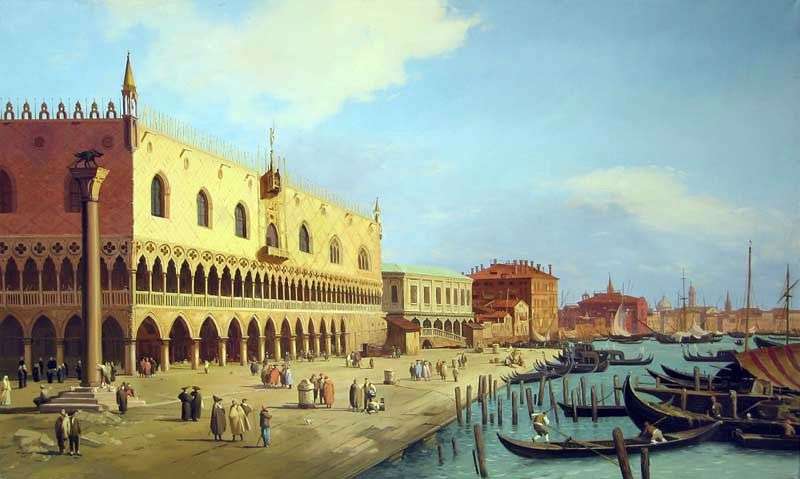 The Doge’s Palace and the Schiavoni Embankment by Antonio Canaletto
The Doge’s Palace and the Schiavoni Embankment by Antonio Canaletto Cathedral of San Giovanni e Paolo and Piazza San Marco by Antonio Canaletto
Cathedral of San Giovanni e Paolo and Piazza San Marco by Antonio Canaletto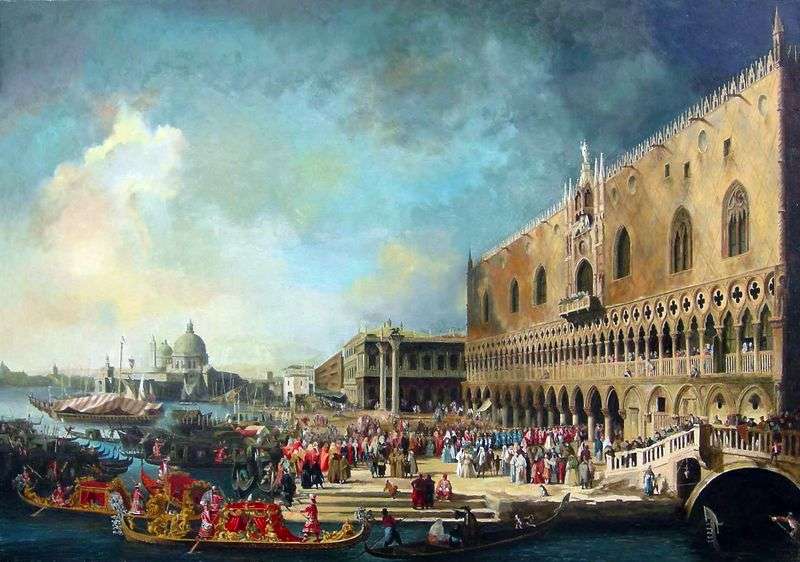 Reception of the French ambassador in Venice by Antonio Canaletto
Reception of the French ambassador in Venice by Antonio Canaletto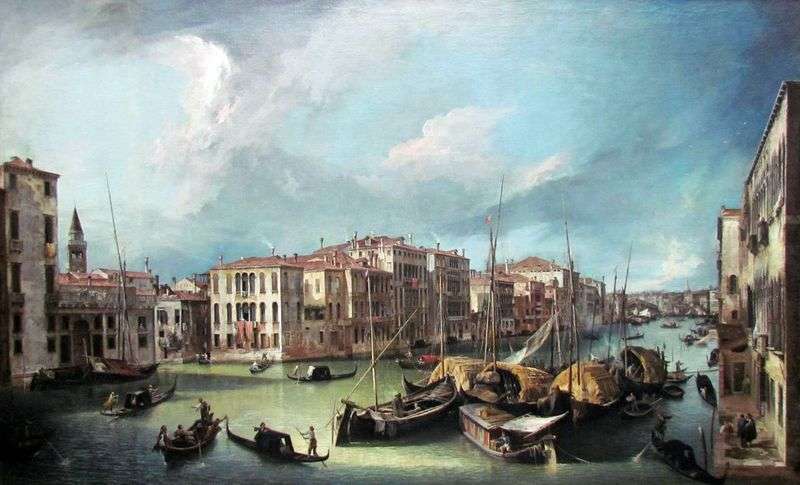 The Grand Canal: a view to the northeast on the Rialto Bridge by Antonio Canaletto
The Grand Canal: a view to the northeast on the Rialto Bridge by Antonio Canaletto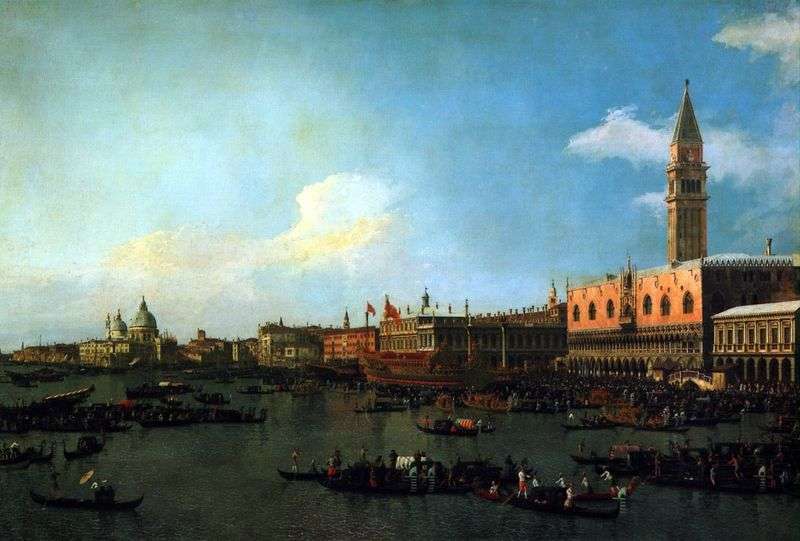 Bucentaurus prepares to sail from the mole on the day of the Ascension by Antonio Canaletto
Bucentaurus prepares to sail from the mole on the day of the Ascension by Antonio Canaletto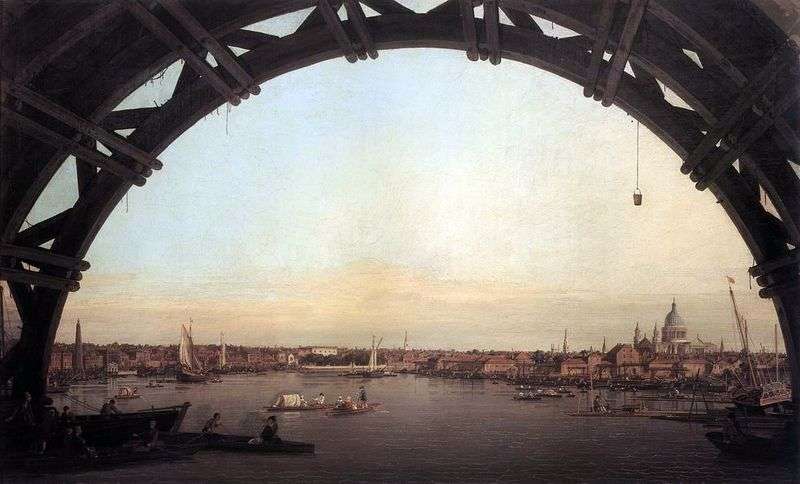 View of London through the arch of Westminster Bridge by Antonio Canaletto
View of London through the arch of Westminster Bridge by Antonio Canaletto Campo di Rialto by Antonio Canaletto
Campo di Rialto by Antonio Canaletto